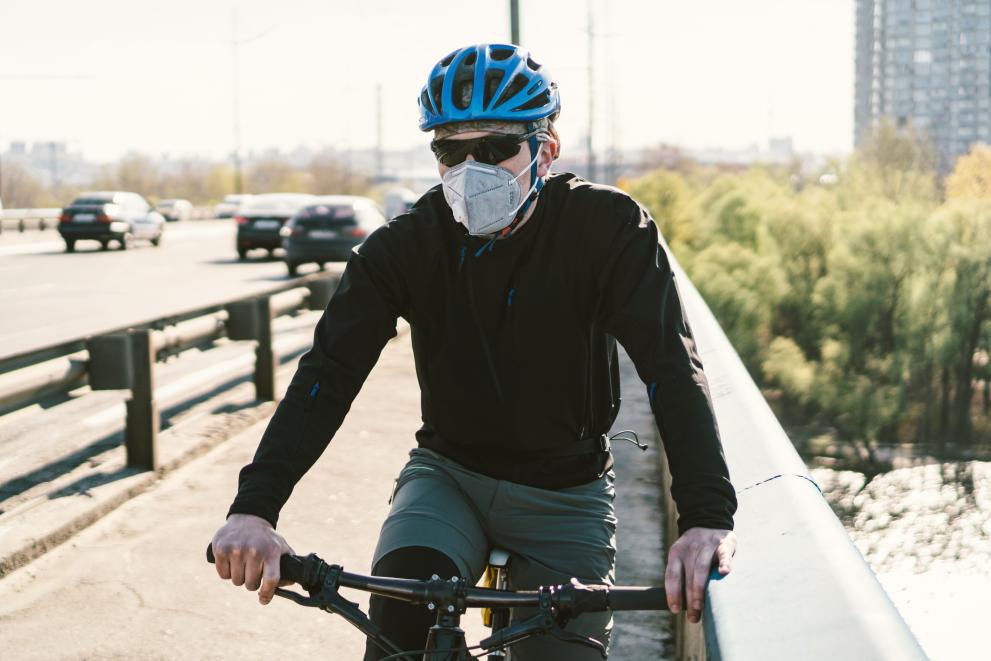
While laboratory studies have shown that environmental conditions influence the spread of COVID-19, a significant impact of outdoor air pollution on the spreading or severity of the disease has not been demonstrated yet, following a recent JRC study.
JRC scientists critically reviewed a selection of scientific studies that have appeared between March and July 2020, linking weather conditions and air pollution to COVID-19 outbreaks. They found methodological shortcomings in many publications. The significance of the impact of environmental conditions on the COVID-19 pandemic has still not been established and their influence might have been overestimated in the statistical studies. In particular, by combining information on comorbidities published by the national statistical office in Italy and the previous epidemiological estimates of air pollution impacts on mortality from various diseases, JRC scientists find that in Europe at most 7% of deaths with confirmed COVID-19 virus could be attributed to air quality impacts. While air pollution can be linked to higher vulnerability, the real impact might actually be small. JRC scientists used estimates of weather conditions that were possibly favourable for increasing the intensity of the epidemics in February-March 2020 and air pollution concentrations to develop maps showing the probability of the occurrence of those possibly favourable conditions over Europe during the year.
Is COVID-19 spread dependent on weather conditions?
Laboratory studies have shown that increasing solar radiation, temperature and humidity may directly reduce the survival rate of the COVID-19 virus in the air and on the surfaces. Statistical studies find the relationship between the initial development of the pandemics and meteorological variables consistent with findings from laboratory experiments. Most of the studies show that increasing solar radiation, temperature and humidity should reduce the spreading of the pandemic, but several studies find that the epidemic intensity might not fully attenuate in summer in the middle latitudes or in sub-tropical and tropical climates.
Most of central and western Europe have possibly favourable conditions from November to March, while eastern and northern Europe may have them in October and from April to May. As observations of COVID-19 cases do not cover a full year in Europe, conclusions on seasonal variability cannot be made at this stage.
Does long-term exposure to air pollution play a role in the outcomes of COVID-19 for those infected?
JRC scientists found methodological shortcomings in many publications statistically linking air pollution to COVID-19 pandemics. By combining information on comorbidities published by the national statistical office in Italy and the previous epidemiological estimates of air pollution impacts on mortality from various diseases, JRC scientists find that in Europe at most 7% of deaths with confirmed COVID-19 virus could be attributed to air quality impacts. While air pollution can be linked to higher vulnerability, the real impact might actually be small with respect to other impacts.
Can air pollution be an efficient carrier for COVID-19?
Observations and laboratory experiments indicate that the COVID-19 virus could be transmitted by aerosols in specific indoor conditions, but the relative importance of aerosols compared to droplets and infected surfaces is not yet established. So far there are no observational or laboratory findings for outdoor conditions influenced by different levels of atmospheric pollution.
Indoor aerosol concentrations are strongly dependent on ventilation and filtering. However, in the absence of details of actual ventilation and/or filtering effects, it is reasonable to assume that, different indoor ambient conditions produce similar airborne virus particle properties, either in terms of lifetime or inhalation efficiency.
Based on an outdoor modelling exercise, JRC scientists estimate that the high ambient pollution levels do not significantly modify atmospheric lifetime and respiratory track deposition efficiency of virus-laden particles with respect to clean continental air conditions.
So far studies statistically relating air pollution to the number of positive cases, deaths or mortality rate do not capture the complexity of the seeding and spreading dynamics sufficiently to allow the identification of any actual air pollution contribution. For this to be possible, more comprehensive studies will be needed.
Future research
There is still insufficient understanding of how environmental conditions may impact the COVID-19 pandemics. The future research requires uniform data collection using international standards, multidisciplinary research and combining statistical estimates with laboratory and field experiments. The longer time series of data should further improve the robustness of the analysis and provide information on different stages of the evolution of the pandemic. If a reliable mathematical relationship can be shown to exist, it can be introduced in epidemiological models for improved monitoring and predicting the pandemics.
Related Content
Details
- Publication date
- 8 October 2020
